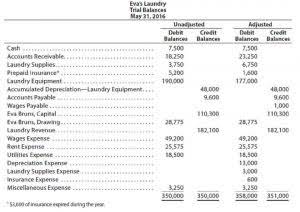The salvage value is the estimated residual value of the asset at the end of its useful life. In addition to straight line depreciation, there are also other methods of calculating depreciation of an asset. Different methods of asset depreciation are used to more accurately reflect the depreciation and current value of an asset. A company may elect to use one depreciation method over another in order to gain tax or cash flow advantages. Calculating after tax salvage value is an essential aspect of managing assets and making informed financial decisions for businesses and individuals alike. The complexity in net present value calculation due to taxes arises from the simple fact that capital budgeting decisions are based on cash flows while income tax is calculated on net income.
Formula: after-tax net cash flows
Understanding after tax salvage value is a crucial component in determining the overall profitability of an investment or asset. It helps businesses and individuals estimate the net cash flow they will receive when disposing of an asset after taking into account the applicable tax consequences. In this article, we’ll walk you through the process of calculating the after tax salvage value.
Depreciation Calculation
- It is calculated by simply dividing the cost of an asset, less its salvage value, by the useful life of the asset.
- Different methods of asset depreciation are used to more accurately reflect the depreciation and current value of an asset.
- Managers must weigh the trade-offs between tax benefits, financial reporting consistency, and decision-making needs.
- Let’s say the company assumes each vehicle will have a salvage value of $5,000.
Book value (also known as net book value) is the total estimated value that would be received by shareholders in a company if it were to be sold or liquidated at a given moment in time. Net book value can be very helpful in evaluating a company’s profits or losses over a given time period. The present value of cash flow after taxes can be calculated to decide whether or not an investment in a business is worthwhile. The higher the CFAT, the better positioned a business is to make distributions to investors. For example, due to rapid technological advancements, a straight line depreciation method may not be suitable for an asset such as a computer.
Example of Residual Value Calculation for a Car Belonging to a Business
A company uses salvage value to estimate and calculate depreciate as salvage value is deducted from the asset’s original cost. A company can also use salvage value to anticipate cashflow and expected future proceeds. To appropriately depreciate after tax salvage value formula these assets, the company would depreciate the net of the cost and salvage value over the useful life of the assets. If the assets have a useful life of seven years, the company would depreciate the assets by $30,000 each year.
Yes, salvage value can be considered the selling price that a company can expect to receive for an asset the end of its life. Therefore, the salvage value is simply the financial proceeds a company may expect to receive for an asset when its disposed of, though it may not factor in selling or disposal costs. One of the first things you should do after purchasing https://www.bookstime.com/ a depreciable asset is to create a depreciation schedule. Through that process, you’re forced to determine the asset’s useful life, salvage value, and depreciation method. Salvage value is an asset’s estimated worth when it’s no longer of use to your business. Say your carnival business owns an industrial cotton candy machine that costs you $1,000 new.

In order to find an asset’s residual value, you must also deduct the estimated costs of disposing the asset. If you earn capital gains on the disposal of an asset, you’ll typically be required to pay tax on that amount. In the case of capital losses, they can often offset other capital gains or be carried forward to offset future gains. This means that the computer will be used by Company A for 4 years and then sold afterward. The company also estimates that they would be able to sell the computer at a salvage value of $200 at the end of 4 years. The Internal Revenue Service (IRS) requires companies to estimate a “reasonable” salvage value.

